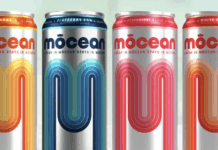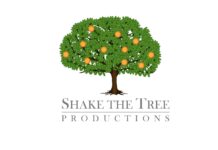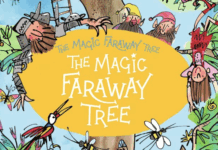Discover the best podcast episode format for engagement and learn how to structure your show to keep listeners coming back every single week.
Format Is King: Designing a Podcast Structure That Hooks and Holds
Let’s start with a brutal truth:
Listeners don’t care how long your podcast is.
They only care if it’s worth their time.
And the difference between a podcast that loses people in minute 3 — and one they can’t stop binging — is almost always format.
Recipes for the best podcast episode format for engagement
A well-structured podcast episode creates rhythm, pacing, emotional payoff, and memory. In this article, I’ll show you how to build the best podcast episode format for engagement, no matter your niche or style.
Why Format Matters More Than You Think
Most podcasters obsess over gear, guests, or growth hacks. But none of those matter if your episode structure is a mess. Great podcasts do three things exceptionally well:
-
Hook fast
-
Deliver consistently
-
Leave them wanting more
That doesn’t happen by accident — it’s engineered through intentional formatting.
The Five Core Podcast Formats (And Who They’re For)
Before designing your episode structure, identify your overall show format. Here are five common types:
1. Interview Format
Classic and crowded. What separates the best? Focused themes, intentional prep, and a unique host POV.
Best for: Thought leadership, expert-driven niches.
2. Narrative Format
Think Serial, Radiolab, or How I Built This. These shows tell stories using voiceovers, interviews, and sound design.
Best for: Brands, journalists, educators.
3. Solo Monologue Format
Underrated. Solo shows allow high output, clear voice, and deep authority.
Best for: Coaches, creators, consultants.
4. Co-Host Banter Format
Popular with comedy, culture, and niche commentary — but requires chemistry, balance, and prep (not just vibes).
Best for: Personality-driven shows with built-in audience.
5. Hybrid Format
Mixes interviews, solo segments, or narrative bits across episodes or within one.
Best for: Established shows or pros with production help.
Choose your foundation, then build episodes using a repeatable structure.
Building Blocks: Anatomy of an Engaging Episode
A killer episode — no matter the format — typically includes:
1. The Cold Open (Optional)
Hook hard. Use a teaser clip, a bold statement, or a high-stakes question. You’ve got 30 seconds to earn attention.
“This founder raised $6 million — then lost it all in six weeks. Here’s what happened…”
️ 2. Intro Segment (Branded & Consistent)
Set the tone. Include your music, voiceover, tagline, and what listeners can expect. Keep it under 45 seconds.
“Welcome to Underdog Diaries, the podcast where failed founders become future legends…”
️ 3. The Core Content (Segmented = Stronger)
Don’t let content drag. Divide the episode into repeatable segments, such as:
-
“Big Idea of the Week”
-
“Audience Question”
-
“Tool You Can Use”
-
“Myth vs. Fact”
This not only helps structure your thinking — it builds listener habits.
4. The Call to Action (Soft, But Present)
Never beg. But always guide. Mention your newsletter, a guest’s book, a related episode, or your free download.
“If this episode helped, send it to one creator who needs it. And grab the free podcast toolkit in the show notes.”
5. Outro (Memorable & On-Brand)
Close with personality. This is a great place to use music, inside jokes, signature phrases, or a repeatable send-off.
“Stay weird, stay kind — and keep making noise.”
Why Segments Matter (And How to Invent Yours)
Imagine your episode as a TV show. Each segment is like a scene or a recurring feature — it builds familiarity and anticipation.
Create signature segments by asking:
-
What’s a question I always ask guests?
-
What’s one mini-topic I can repeat weekly?
-
What would my listener want in bite-size form?
Example:
A marketing podcast might end each episode with “The Worst Ad I Saw This Week.”
That’s a hook, a brand asset, and a content repurposing opportunity, all in one.
Ideal Episode Length? It’s Not What You Think
There is no perfect length. The only rule is this:
An episode should be as long as it is compelling — and not one second longer.
General Outline for best podcast episode format for engagement
But here are general guideposts:
-
Short-form solo tip: 10–15 mins
-
Tactical interview: 25–35 mins
-
Deep-dive discussion: 45–60 mins
-
Narrative/story podcast: 20–30 mins, tightly produced
Use chapter markers if your episodes are long, or consider splitting a meaty interview into two parts to boost completion rates.
Pro Tip: Reverse-Engineer from Completion Rate
Most podcast hosts (Buzzsprout, Spotify for Podcasters, etc.) offer analytics. Focus on:
-
Completion rates by episode
-
Drop-off points on the timeline
-
Popular segment retention
If listeners consistently drop at minute 12, something’s breaking in your format. Fix it. Test new segment orders. Try shorter intros. Move the value up.
✅ TL;DR – How to Build the Best Podcast Episode Format for Engagement
-
Choose a core format that plays to your strengths (interview, solo, narrative, etc.)
-
Structure episodes with repeatable segments and strong pacing
-
Hook early, deliver clearly, close memorably
-
Use analytics to refine your structure over time
-
Build formats your audience can rely on — and look forward to
Joe Wehinger (aka Joe Winger) has 25 years of entertainment experience and 10 years in business working with Golden Globe winning, Emmy Winning, Hall of Fame inductee entertainment legends and business titans around the world. In addition to being a Directors Guild member and a certified Executive Producer (specialist in investor agreements, tax incentive, private financing), he runs a global digital marketing agency for over 12 years helping projects around the world create life-changing profits and positive impact. Today he’s studying how AI will interrupt and evolve our future.
Discover the best podcast episode format for engagement and learn how to structure your show to keep listeners coming back every single week.








![The Rise of Wisconsin Rye Whiskey: A Flavorful Story of Community and Craft [Exclusive Interview with John Mleziva] Explore the rise of Wisconsin rye whiskey, its Driftless flavor, and the community-driven craft behind State Line Distillery’s celebrated five-year release.](https://dailyovation.com/wp-content/uploads/2025/12/Screenshot-2025-12-02-at-8.44.22-PM-218x150.jpg)









![Get Your Indie Movie Made (Responsibly): Jeff Caruso of Wrapbook Leads the AFM 2025 Film Finance Conversation [Exclusive Interview] American Film Market](https://dailyovation.com/wp-content/uploads/2025/11/AmericanFilmMarket2025-1-218x150.jpg)














